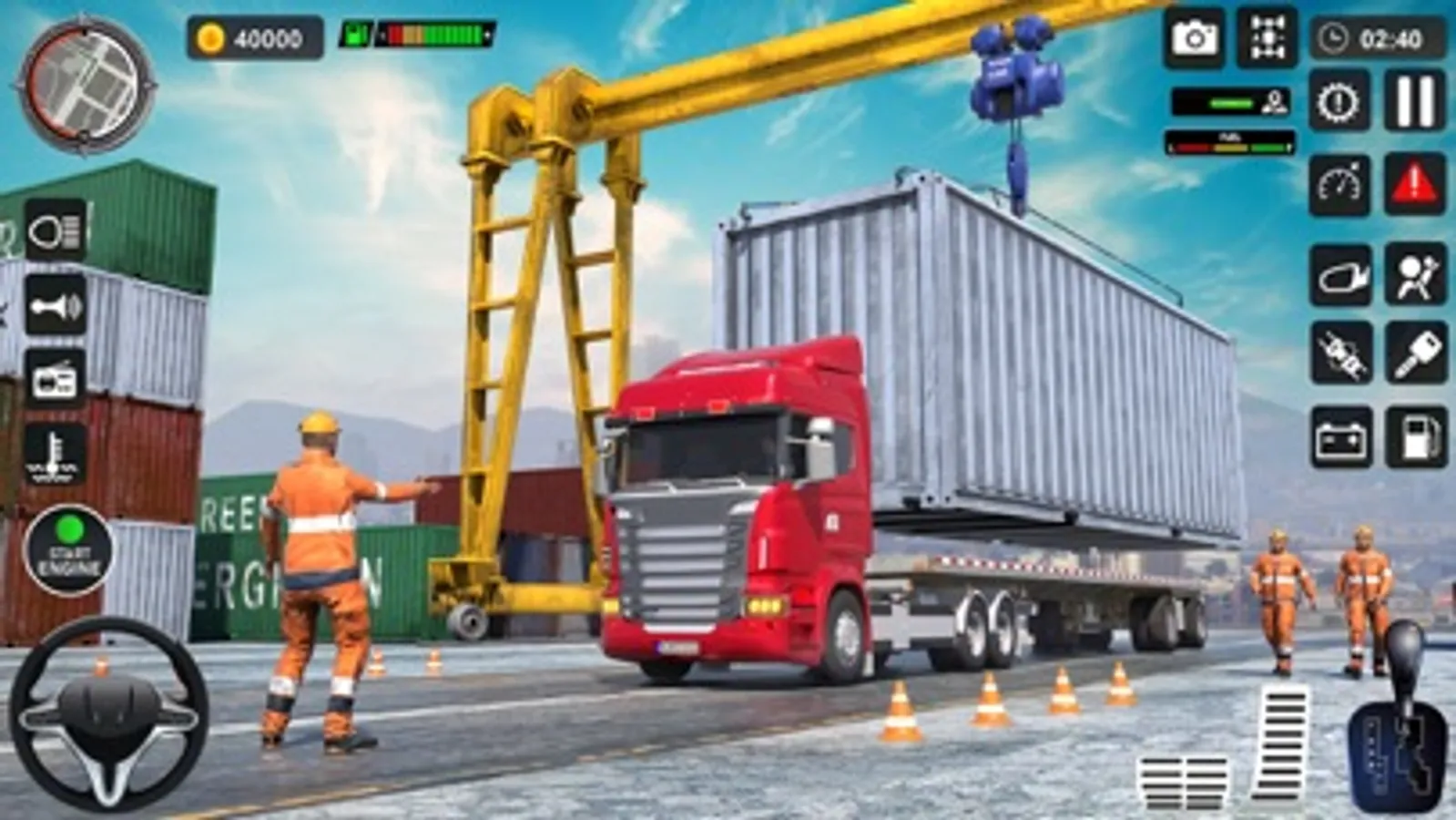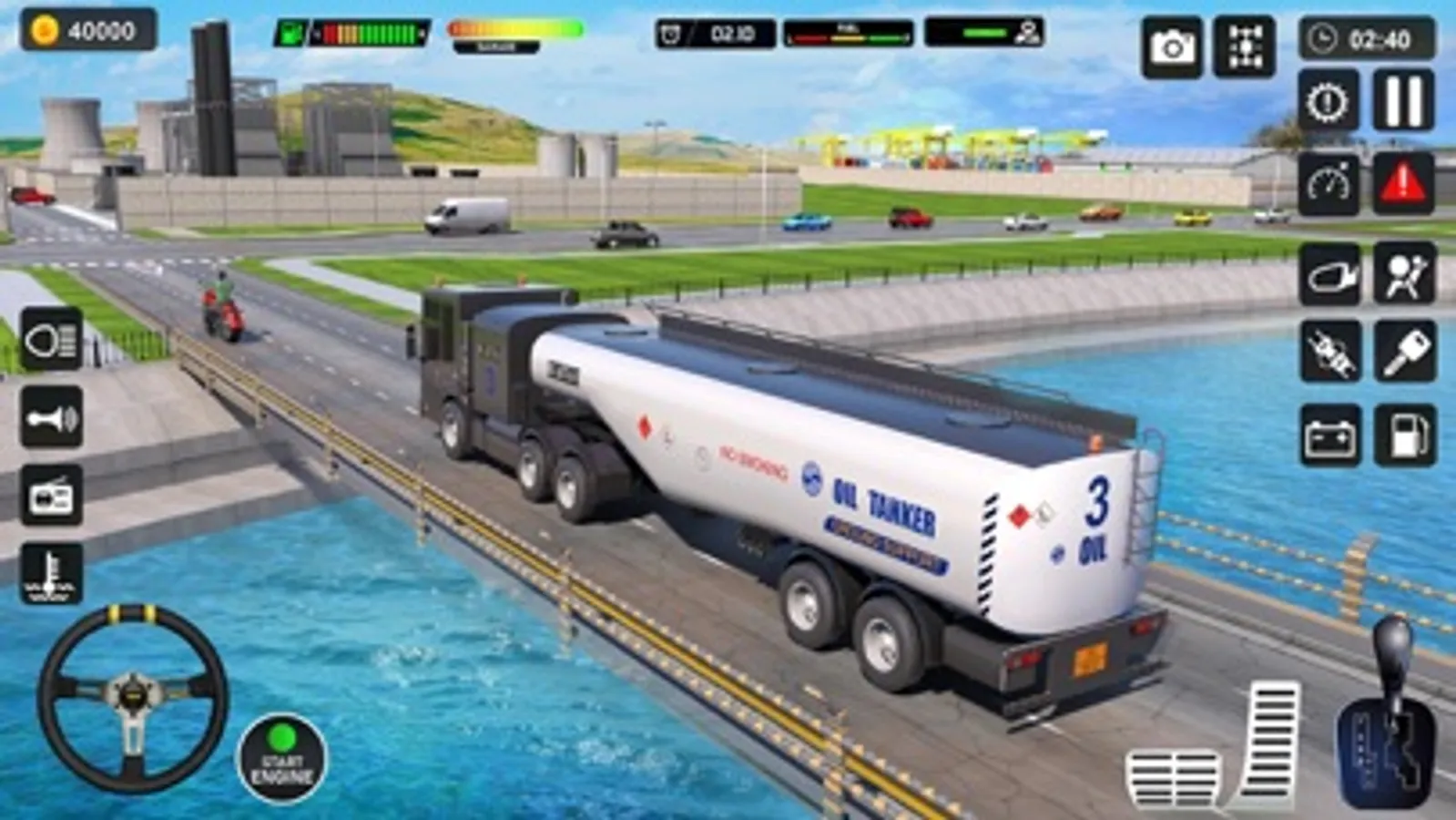Truck Transport Games
Muhammad Waqas
Free
About Truck Transport Games
An oil tanker is a specialized vessel designed for transporting large quantities of crude oil or refined petroleum products across oceans and seas. These massive ships are specifically constructed to ensure the safe and efficient delivery of oil from production areas to refineries or distribution centers worldwide.
Oil tankers are typically constructed with double hulls or other advanced structural features to enhance safety and minimize the risk of oil spills in the event of a collision or grounding. They can vary in size, ranging from smaller vessels with capacities of a few thousand metric tons to enormous supertankers capable of carrying hundreds of thousands of metric tons of oil.
The cargo area of an oil tanker consists of multiple storage tanks, usually arranged in compartments, which are used to contain the oil during transit. These tanks are carefully designed and equipped with sophisticated pumping and monitoring systems to ensure the stability of the vessel and prevent leakage or overflow.
Loading and unloading of oil from an oil tanker is typically performed at specialized facilities called oil terminals or ports. These facilities have dedicated berths equipped with loading arms or hoses to transfer the oil between the vessel and onshore storage facilities. The transfer process involves utilizing powerful pumps to load or discharge the oil at a controlled rate.
Oil tankers are operated by skilled crews, including licensed marine officers, engineers, and seafarers, who are responsible for the safe navigation of the vessel, maintenance of equipment, and adherence to international maritime regulations. Advanced navigation systems, such as radar, GPS, and electronic chart displays, are employed to ensure accurate positioning and collision avoidance during the voyage.
Overall, oil tankers play a critical role in the global energy industry, facilitating the transportation of oil over long distances and enabling the supply of this vital natural resource to meet global demand. Their design, construction, and operational procedures prioritize safety and environmental protection to mitigate the potential risks associated with oil transportation.
Oil tankers are typically constructed with double hulls or other advanced structural features to enhance safety and minimize the risk of oil spills in the event of a collision or grounding. They can vary in size, ranging from smaller vessels with capacities of a few thousand metric tons to enormous supertankers capable of carrying hundreds of thousands of metric tons of oil.
The cargo area of an oil tanker consists of multiple storage tanks, usually arranged in compartments, which are used to contain the oil during transit. These tanks are carefully designed and equipped with sophisticated pumping and monitoring systems to ensure the stability of the vessel and prevent leakage or overflow.
Loading and unloading of oil from an oil tanker is typically performed at specialized facilities called oil terminals or ports. These facilities have dedicated berths equipped with loading arms or hoses to transfer the oil between the vessel and onshore storage facilities. The transfer process involves utilizing powerful pumps to load or discharge the oil at a controlled rate.
Oil tankers are operated by skilled crews, including licensed marine officers, engineers, and seafarers, who are responsible for the safe navigation of the vessel, maintenance of equipment, and adherence to international maritime regulations. Advanced navigation systems, such as radar, GPS, and electronic chart displays, are employed to ensure accurate positioning and collision avoidance during the voyage.
Overall, oil tankers play a critical role in the global energy industry, facilitating the transportation of oil over long distances and enabling the supply of this vital natural resource to meet global demand. Their design, construction, and operational procedures prioritize safety and environmental protection to mitigate the potential risks associated with oil transportation.






